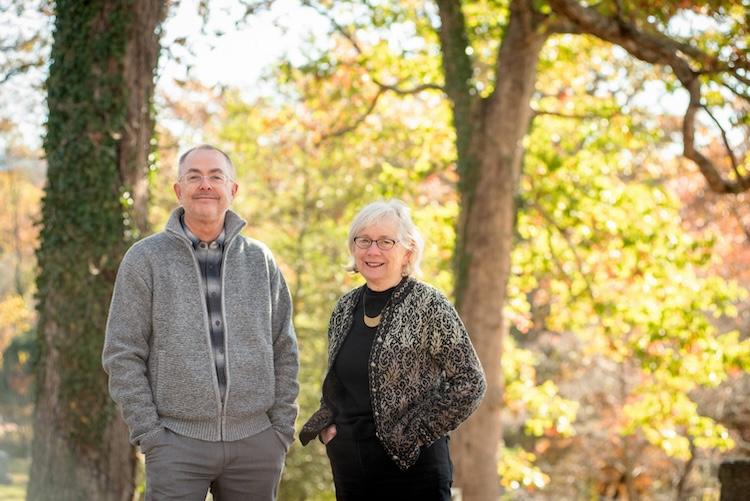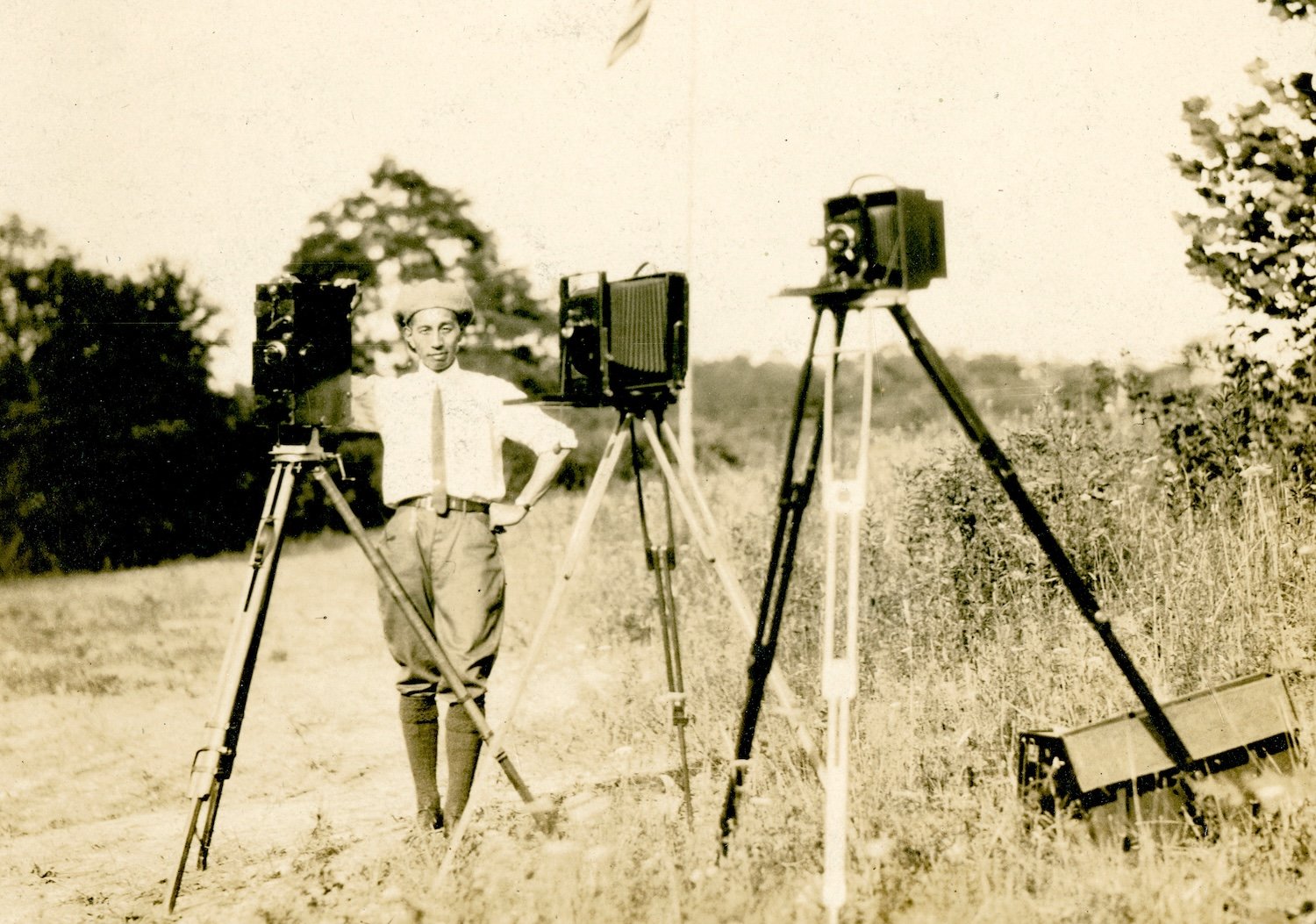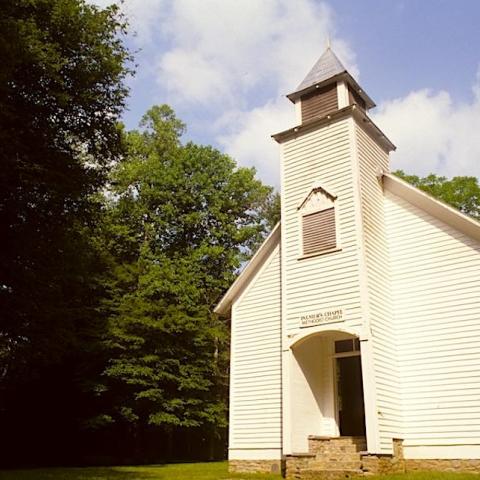George Masa, a slender Japanese man with a big grin who hiked throughout the mountains of western North Carolina and east Tennessee in the 1920s and early 1930s, left behind a remarkable photographic chronicle of the landscape soon to become Great Smoky Mountains National Park.
Masa was aided in his work by friends who often helped carry his state-of-the-art camera equipment, and sometimes he was seen using a strange apparatus—a wheel attached to bicycle handlebars—to measure the trails and peaks of the Smokies Divide.
This past September a historical title of regional and national importance —George Masa: A Life Reimagined— was released by Smokies Life in honor of his work and role.
Great Smoky Mountains National Park aficionados know Masa’s stunning images helped spur the park’s creation and that he devoted years to scouting and mapping the southern portion of the Appalachian Trail. Yet, until now, Masa’s backstory could be said to resemble some of his famous photographs of mountains shrouded in mysterious columns of fog and mist.

“George Masa: A Life Reimagined” by Janet McCue and Paul Bonesteel was released on September 10, 2024. The groundbreaking biography published by Smokies Life reveals previously unknown details about the life of a visionary Japanese photographer and conservationist
“Masa was one of a new breed of photographer-explorers, a modest man who photographed a landscape that few had ever seen,” said the book’s co-author Janet McCue, whose research on Masa began years ago as she was writing Back of Beyond: A Horace Kephart Biography with the late George Ellison. “We now know he had also been an athlete in Japan and on the West Coast and, as a Japanese immigrant, he faced some of the most difficult challenges of the 20th century.”
As McCue’s Back of Beyond was winning the Thomas Wolfe Memorial Literary Award in the summer of 2019, the retired Cornell University librarian was already talking with Asheville-based filmmaker Paul Bonesteel about a new project: co-writing a full-length biography of George Masa. Bonesteel’s 2002 documentary The Mystery of George Masa had nobly presented the pieces of the puzzle known up until that time and helped generate renewed interest in the photographer.
“Masa created thousands of photos while he was in this region, and many disappeared after his death,” said Bonesteel. “But the captivating figure of Masa himself survived in both the local memory and imagination.”
Bonesteel first caught the “Masa bug” after reading a 1997 essay titled “George Masa: The Best Mountaineer” by William A. Hart Jr., who also penned the introduction for this new 320-page biography, which includes 32 pages of iconic and lesser-known images.
“Masa’s friends knew about his birth in Japan, his initial employment at the Grove Park Inn, and his growing prominence as a photographer, but little else,” Hart wrote.

A George Masa photograph of a sunset as viewed from Mount Mitchell northeast of Asheville, NC/Photo courtesy of George Mason University Libraries, Special Collections Research Center, Appalachian Trail Conservancy Collection.
Masa spent the last 18 years of his life in Asheville, North Carolina. In their new book, McCue and Bonesteel reveal how he endured a spate of anti-Asian legislation, the 1918 pandemic, scrutiny from the Federal Bureau of Investigation, harassment from the Ku Klux Klan, and the collapse of the economy from 1929 until his death. Despite it all, Masa never wavered in his dedication to his photography business or his work promoting conservation in southern Appalachia. “Always my head is up,” he reassured a close friend, drawing on the solace he found in nature and his tight-knit community of contemporaries in Asheville and the Great Smokies.
Some of the book’s most startling revelations, however, relate to Masa’s early life and the complex circumstances that first brought him to western North Carolina.
“We now know Masa grew up in Shizuoka with Mount Fuji soaring on the horizon,” said McCue, who joined Bonesteel for a two-week adventure to Japan in July. “When Masa had time and money as a young man in Japan, he hiked. When he was stressed by the various woes of life in Asheville, he hiked.”
In 1931, in the throes of the Great Depression, Masa wrote: “When I make [a hiking] trip these things don’t bother me I just leave office and go into woods get fresh balsam air then come back start strong fight, no use to worry, that’s [the] way I do, may[be] I am wrong, but it [is] good to me all [the] time.” McCue’s hope is that readers of the Masa biography will be similarly inspired.
For his part, Bonesteel hopes the book shows how Masa’s work in the Smokies “was the culmination of his lifetime of fascination with mountains and photography,” he said. “I hope readers can see how the southern Appalachian Mountains provided Masa with a place that connected him to a sense of his ancestral home in Japan, but also clearly a venue where he could pursue a new life.”
Bonesteel said a dominant facet of Masa’s experience in the southern Appalachians was his passionate desire to contribute to the preservation and enjoyment of the mountains and trails he explored. “He used his skills as a photographer, friend, and trailblazer to document and promote the area, which was essential to protecting these amazing places.”
According to McCue, unearthing details about Masa’s life proved much more challenging than writing about his friend and fellow park booster Horace Kephart for her first book.
“Kephart was a librarian and archivist at heart, so we have decades of his own writings,” she said, “while library archives hold his detailed journals and files of correspondence to and from friends and family. In contrast, other than business correspondence, we have a much smaller archive of George Masa’s writing.”

A George Masa photograph of Looking Glass Falls in North Carolina’s Pisgah National Forest/Photo provided by Smokies Life courtesy of Buncombe County Special Collections, Pack Memorial Public Library, Asheville, NC.
Thankfully, a small cache of letters written in Japanese was found and preserved by Asheville’s May family after Masa died while a lodger in their home. Those letters proved to be an invaluable key to the research Bonesteel and McCue conducted for their book. Another important source was a diary—now housed in the archives at Western Carolina University’s Hunter Library—in which Masa jotted down notes in English and Japanese.
In addition to support from Smokies Life, the co-authors received a Podell Endowment Award for Research and Scholarship that allowed them to hire language experts and researchers in Japan and on the West Coast to help unravel the mysteries. They even engaged facial-recognition software to help confirm Masa’s original identity in Japan before he chose to reimagine his life in the states.
Because Bonesteel is a visual artist, McCue said he helped her “see” and “feel” some of the details they encountered in the Masa story. “There are so many ‘scenes’ within the biography that were inspired by Paul,” she said. “His vision enriched both my perspective and the narrative.”
Having never written a book before, Bonesteel looked to McCue for “the vision and pacing of how to go about the task” and said, compared with filmmaking and script writing, it was liberating “to not be concerned about visuals to be associated with every statement or chapter.”
The co-authors each benefited from the other’s skills, knowledge, writing, and research. “We’re able to brainstorm, agree, disagree, and talk through vague ideas and hypotheses,” McCue said. “We share a passion, trust each other’s perspective, and are deeply committed to the project.”

Co-authors Janet McCue and Paul Bonesteel stop to pose in Tokyo on a recent trip to connect with their Japanese research team and collect footage for Bonesteel’s forthcoming Masa documentary.
And that commitment doesn’t end with the launch of George Masa: A Life Reimagined. Bonesteel is making a new film about Masa to “tell the powerful story of his life learned through the new research and the extraordinary people and places that are part of it.” McCue added that they also “continue to pursue new leads in the story. So, Paul and I aren’t done with Masa yet.”
For Bonesteel, what started as a spark of interest has become a quarter-century-long obsession. What would he say to the man, could the two meet today?
“I’d tell him, ‘Your work, your story, and your passion continue to inspire people. Thank you for giving us such a remarkable story to tell. Now, when I hike the high mountains, I feel like I truly know you.”
Masa died much too young at 48, McCue said. So, she would want to thank him for his work on behalf of the Smokies and the Appalachian Trail.
“We visited the Shin-Etsu Trail in Japan that was modeled after the Appalachian Trail,” she said. “I bet he’d be pleased to hear that his work on the AT inspired a similar movement in the Japanese Alps.”






 Support Essential Coverage of Essential Places
Support Essential Coverage of Essential Places






